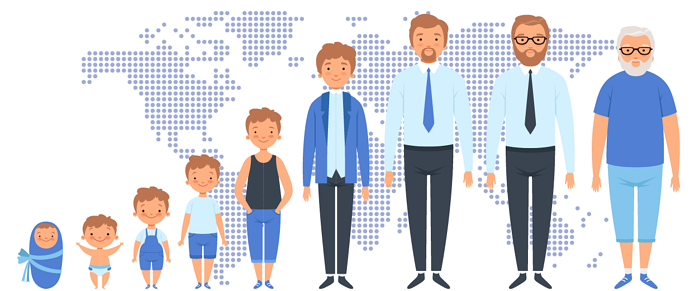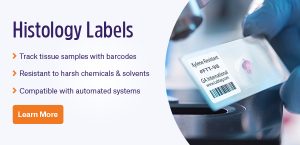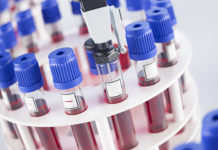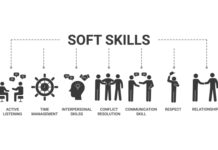 With new Artificial Intelligence (AI) technology primed to revolutionize medicine, including diagnostics and drug discovery, it was only a matter of time until scientists decided to use AI to solve the question no one has yet been able to answer: why do we age at all?
With new Artificial Intelligence (AI) technology primed to revolutionize medicine, including diagnostics and drug discovery, it was only a matter of time until scientists decided to use AI to solve the question no one has yet been able to answer: why do we age at all?
It all started with yeast
It was 15 years ago that I started my Ph.D. working in the field of aging research. My initial foray into longevity began with yeast; I wanted to know how and why yeast aged. It may seem like an abstract field of research, but yeast is where the molecular basis of aging was first conceptualized. Allow me to explain. Aging isn’t just wear-and-tear on the body; it’s regulated by many developmental components that are influenced by genetics and the environment. Many of the biomolecular pathways that determine how long yeast live can also affect higher organisms in similar ways. Mammalian target of rapamycin (mTOR) signaling, which is critical for the growth of most cells, is an example of a well-known pathway that can accelerate aging in not just yeast, but worms, flies, and mammals as well. Lifespan research has come a long way, with studies in yeast paving the way for scientists to attempt a more global approach to studying aging in humans and developing strategies to slow it down.1
How do scientist study aging?
Most aging studies revolve around nutrient-sensing pathways. Because caloric restriction was one of the first interventions known to slow aging in many different species, it was only natural that the modules that sense nutrients were the first to be intensely studied. Many familiar pathways, like insulin/insulin growth factor (IGF) signaling, were initially associated with aging more than 20 years ago.2 Other cellular processes have since been associated with aging, including telomere length and function, protein homeostasis, epigenetic regulation, mitochondrial function, cellular senescence, stem cell exhaustion, and cell-to-cell communication. Some of these are global among all species, from yeast to humans, while others, such as stem cell exhaustion, are specific to vertebrates.1
So, how does one measure lifespan? In yeast, there are two measures of lifespan that correlate with human aging: replicative lifespan and chronological lifespan. Replicative lifespan is the number of times a cell with give rise to daughter cells before becoming unable to do so. This kind of aging matches well with cells that are constantly dividing in our bodies, like skin cells and stem cells. Conversely, chronological lifespan measures how long a pool of nondividing cells will remain viable, which is a good model for cells that don’t divide anymore, like neurons.3
Of course, yeast isn’t a perfect model for human aging, since our bodies are composed of multiple different cell types working in unison. We could measure the simple time to death for humans but doing so blurs the reason(s) behind each individual’s death. For instance, two people may contract different age-related diseases that lead to completely different outcomes. Though they may seem to have aged similarly, one may die while the other lives on for many more years. Instead, scientists are studying the hallmarks of aging and looking for markers that can distinguish between young and old by looking at the genomic, proteomic, and metabolomic changes associate with old age, either in animal models or using individuals with exceptionally short (e.g. people with progeria, a genetic abnormality leading to advanced aging) or long lifespans. Newer animal models are also becoming more prevalent, including animals who age much slower than expected based on their small body size, such as naked mole rats, and those who age quickly enough, and with similar characteristics of human aging, that experimentation can be completed much quicker, like the African killifish, which lives for only 6 to 9 months.1
How A.I. is helping solve the aging puzzle
AI, including machine learning, deep neural networks (DNNs), and other forms of types of artificial learning programs, is currently being used to speed up research in several different aspects of human aging:4
Biomarker discovery – Though biomarkers for aging exist, there aren’t very many and the ones that exist don’t represent the true age of an individual with any sort of accuracy. Scientists are now relying on AI-based programs, primarily DNNs, to parse out several different kinds of age-related biomarkers, including imaging markers, transcriptomic markers, epigenetic markers, and markers associated with physiological measurements, like vital signs and blood chemistry. Several interesting biomarkers have been identified using AI, such as the eye corner area of the human face, blood pressure, as well as albumin, glucose, urea, and alkaline phosphatase levels in the blood.
Target identification – Finding just the right gene or protein to target takes a lot of guesswork when you’re trying to find ways to make organisms live longer. Signaling pathways are extremely complex, with a lot of crosstalk constantly occurring between several pathways to yield a physiological output. Just studying one pathway is difficult for the average scientist, especially when you consider that these pathways are modulated by both genetic and environmental determinants. However, measuring the activation of many of these and assessing which ones are important for the aging process is something that AI can perform much faster and with a higher level of accuracy than humans can. Several AI models, such as iPANDA, can reduce the complexity from tens of thousands of signaling pathway features to assessments on only a few dozen pathways.
Small molecule screening – AI can help identify candidate anti-aging drugs in many ways: it can optimize novel drug synthesis, it can more easily screen likely drug candidates, and it can assess potential safety issues with each candidate. AI models that are based on generative adversarial network (GAN) algorithms appear to be especially important. GAN models can generate virtual models of hypothetical compounds that have the appropriate features, effectively tailoring the process towards discovering compounds that can extend longevity.
Regenerative medicine – A subset of lifespan research focuses on using stem cells to regenerate body tissues, effectively slowing down aging. Recently, induced pluripotent stem cells (iPSCs) have been placed at the forefront of stem cell research and regenerative medicine because they can be generated from any tissue of the body, even skin cells, and differentiated into almost any cell type. Unfortunately, performing large-scale iPSC differentiation protocols for industrial applications is inefficient and costly. Here, AI, in the form of DNNs and machine learning, is being used to design automated systems that can optimize the differentiation process. AI can also be employed to study the basic developmental processes of iPSCs, including monitoring their state of development during differentiation.
Gene therapy – Gene therapy involves treating a disease by introducing genetic material into the body to compensate for pathogenic gene alterations. While the therapeutic targets themselves are most times apparent, the optimal method to generate an ideal system to treat the illness is not. Here, AI can fine tune gene editing techniques, like CRISPR, improving the precision of the treatment. They can also be employed to design gene therapies that target age-related processes.
Immunology – One of the hottest areas of aging-related research is cancer immunotherapy. Using the immune system to fight cancer has been a boon to the pharmaceutical industry, with several companies selling US Food and Drug Administration (FDA) and European Medicines Agency (EMA)-approved immunotherapies that work better than the standard treatments for multiple forms of cancer.5–7 However, a growing problem is identifying those who would benefit most from these therapies and personalizing patient treatment. Here, AI can be used to reduce the diagnosis error rate and to better characterize the disease, speeding up the process, so that patients can receive the appropriate treatment earlier. It can also be used to identify biomarkers that can distinguish old and young immune systems as well as key drivers of immune system aging.
Though not everyone wants to live forever, many would be happy living slightly longer without the risk of illnesses like cancer and Alzheimer’s disease. With an aging population around the world, the burden that age-related illness places on society will keep growing, demanding more and more resources. As AI technology is developing at an accelerated rate, so too will longevity research, eventually leading to new ways we can fight aging and age-related disorders.
LabTAG by GA International is a leading manufacturer of high-performance specialty labels and a supplier of identification solutions used in research and medical labs as well as healthcare institutions.
References:
- Singh PP, Demmitt BA, Nath RD, Brunet A. The Genetics of Aging: A Vertebrate Perspective. Cell. 2019;49:49-66.
- Kimura KD, Tissenbaum HA, Liu Y, Ruvkun G. Daf-2, an insulin receptor-like gene that regulates longevity and diapause in Caenorhabditis elegans. Science (80- ). 1997;277(5328):942-946.
- Longo VD, Shadel GS, Kaeberlein M, Kennedy B. Replicative and chronological aging in saccharomyces cerevisiae. Cell Metab. 2012;16(1):18-31.
- Zhavoronkov A, Mamoshina P, Vanhaelen Q, Scheibye-Knudsen M, Moskalev A, Aliper A. Artificial intelligence for aging and longevity research: Recent advances and perspectives. Ageing Res Rev. 2019;177(1):200-220.
- US Food and Drug Administration (FDA). Hematology/Oncology (Cancer) Approvals & Safety Notifications. Silver Spring, MD; 2019.
- European Medicines Agency. Keytruda pembrolizumab.; 2019.
- European Medicines Agency. Opdivo nivolumab.; 2019.




